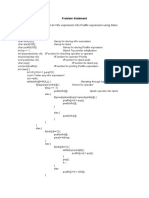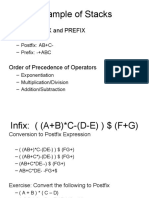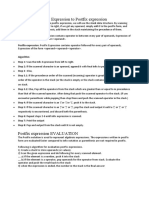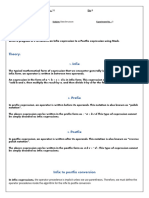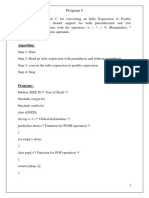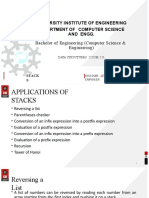0% found this document useful (0 votes)
9 views3 pagesConvert An Infix Expression Into A Postfix Expression
The document describes an algorithm for converting infix expressions to postfix expressions without whitespace. It outlines four cases for processing tokens: handling brackets, operands, and operators while managing a stack for precedence. Examples of input and output are provided to illustrate the conversion process.
Uploaded by
Sheela MenseCopyright
© © All Rights Reserved
We take content rights seriously. If you suspect this is your content, claim it here.
Available Formats
Download as DOCX, PDF, TXT or read online on Scribd
0% found this document useful (0 votes)
9 views3 pagesConvert An Infix Expression Into A Postfix Expression
The document describes an algorithm for converting infix expressions to postfix expressions without whitespace. It outlines four cases for processing tokens: handling brackets, operands, and operators while managing a stack for precedence. Examples of input and output are provided to illustrate the conversion process.
Uploaded by
Sheela MenseCopyright
© © All Rights Reserved
We take content rights seriously. If you suspect this is your content, claim it here.
Available Formats
Download as DOCX, PDF, TXT or read online on Scribd
/ 3










